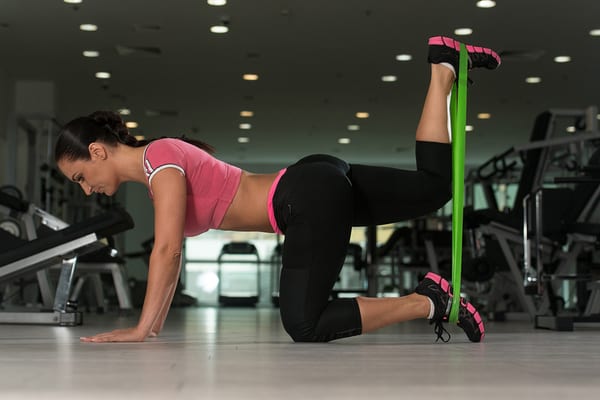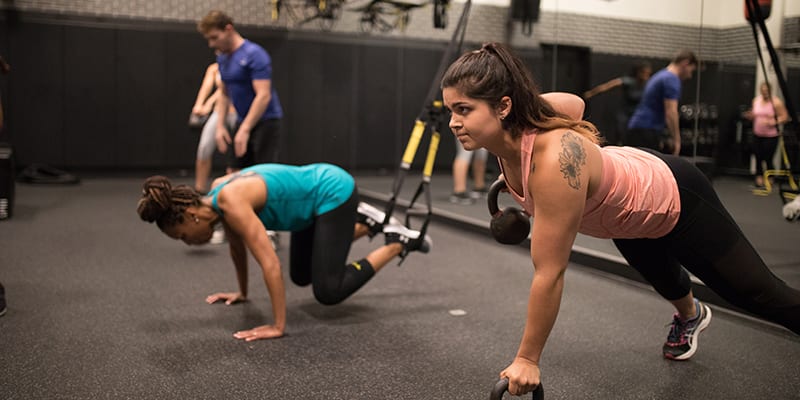Tools for Strength Training at Our Gyms in Baltimore, Reisterstown, & Timonium
Have you seen people using those brightly colored rubber bands around the gym and wondered what that was all about? They’re called resistance bands, and they are a strength training go-to for many fitness enthusiasts. Here’s a closer look at everything you’ve always wanted to know about resistance band strength training.
Beyond Bodyweight
Bodyweight exercises can deliver an awesome workout. However, sometimes you need just a little bit more but you don’t always have a full set of weights (or a lifting partner) at your disposal. Enter resistance bands. Made of strong, thin, reinforced rubber, often with a handle at each end, these lightweight, portable, and inexpensive pieces of fitness equipment offer a full-body workout which can easily be adjusted for both variety and intensity.
While resistance bands are now widely used for fitness, they originally served a different purpose, injury recovery and prevention. Why? Because they are uniquely suited to working isolated muscles in order to build strength and promote recovery.
However, it didn’t take long before fitness experts realized that the many benefits of exercising with resistance bands carried over to workouts, too.
The Many Benefits of Resistance Bands
With the right technique, resistance bands can be used to perform all of the same exercises as free weights, including everything from bicep curls and tricep extensions to chest presses and rows. They even work for squats! Looking to increase the intensity of your leg lifts or push-ups? Resistance bands are your new best friend. They’re also ideal for working out smaller muscles which are more difficult to target with weights.
Resistance bands aren’t just for when weights aren’t available. Says FitDay, “With resistance bands, you can say goodbye to boring workouts. With a weight machine, you are limited in the muscle groups worked and the direction of the movement. Resistance bands afford you the flexibility of moving in all different directions. They can be used to deepen the strength of just about every muscle in the body. You can get creative with resistance bands and use them to both strengthen and stretch your muscles.”
Resistance bands don’t just build strength, either. They also promote balance, coordination, and even toning. As fitness instructor Linda LaRue told Fitness Magazine, “Using a resistance band boosts the firming power of any ab move.”

The best part? While they may look complicated, resistance bands are suitable for people of all fitness levels and abilities. In addition to coming in a range of resistances spanning from light to heavy, resistance bands also let exercisers adjust the intensity of a workout simply by adding or reducing slack.
They also support a diversity of fitness goals. Says LeanItUp in a ringing endorsement for resistance bands, “Band training is an impactful way to emphasize muscular endurance, build muscle tone, and develop explosive strength — especially if muscle size isn’t a top priority. And if you’re constantly crushing free weights, it’s a stellar way to confuse your muscles, galvanize growth, and combine elements of cardio with explosive resistance training. That helps torch body fat.” Who can argue with that?
There’s one last thing to keep in mind. While resistance bands have amazing potential to transform your fitness regimen, they’re only as effective as your technique. A personal trainer can offer invaluable insights when it comes to optimal techniques for maximizing the benefits of pumping elastic. Sign up for a personal trainer session today to learn more about what strength training with resistance bands can do for you.





